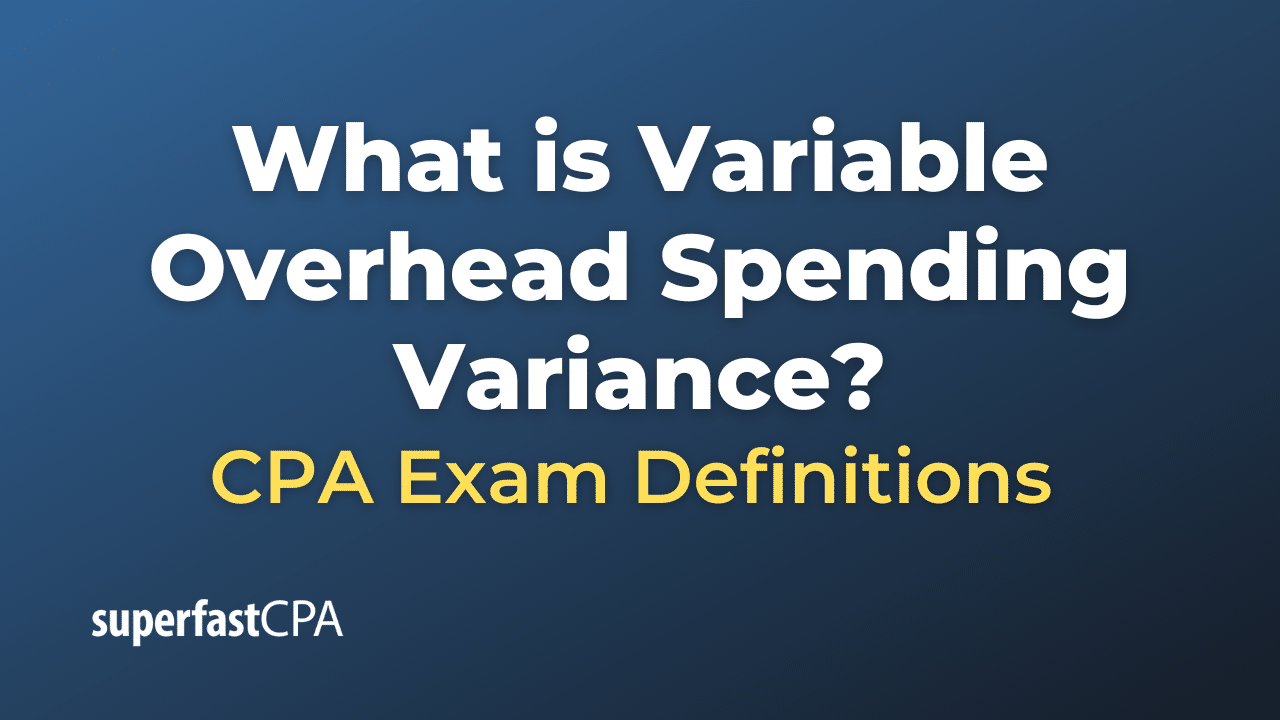
If however, the balances are significant in relation to the size of the business, then we need to analyze the variable overhead variances between the inventory accounts (work in process, and finished goods) and the cost of goods sold account. Variable Overhead Spending Variance is the difference between variable production overhead expense incurred during a period and the standard variable overhead expenditure. The variance is also referred to as variable overhead rate variance and variable overhead expenditure variance. Suppose Connie’s Candy budgets capacity of production at 100% and determines expected overhead at this capacity.
FAR CPA Practice Questions: Capital Account Activity in Pass-through Entities
- To operate a standard costing system and allocate variable overhead, the business must first decide on the basis of allocation.
- Conversely, a negative variance is favorable, indicating that the actual costs were less than expected.
- Adam Hayes, Ph.D., CFA, is a financial writer with 15+ years Wall Street experience as a derivatives trader.
- We may earn a commission when you click on a link or make a purchase through the links on our site.
- The fixed factory overhead variance represents the difference between the actual fixed overhead and the applied fixed overhead.
Thecompany can then analyze how to reduce the extra ninety dollars spent tosynchronize the actual profits with budgeted profits. The variance analysis helps a company scrutinize all the areas where costs can be reduced somehow to increase the company’s overall profits. Chartered accountant Michael Brown is the founder and CEO of Double Entry Bookkeeping. He has worked as an accountant and consultant for more than 25 years and has built financial models for all types of industries. He has been the CFO or controller of both small and medium sized companies and has run small businesses of his own. He has been a manager and an auditor with Deloitte, a big 4 accountancy firm, and holds a degree from Loughborough University.
What is Variable Overhead Spending Variance?
The use of activity based costing to calculate overhead variances can significantly enhance the usefulness of such variances. Interpretation of the variable overhead rate variance is often difficult because the cost of one overhead item, such as indirect labor, could go up, but another overhead cost, such as indirect materials, could go down. Often, explanation of this variance will need clarification from the production supervisor.
How confident are you in your long term financial plan?
These costs are not directly tied to the production of a specific unit but are necessary for the overall manufacturing process. A primary component of variable overhead is indirect materials, which include items like lubricants, cleaning supplies, and other consumables that support production but are not part of the final product. These materials are essential for maintaining equipment and ensuring smooth operations.
Ask a Financial Professional Any Question
For instance, an unanticipated surge in demand might necessitate additional shifts, increasing labor costs and utility consumption beyond what was initially budgeted. Conversely, a sudden drop in production can lead to underutilization of resources, which might not immediately translate into reduced costs due to fixed commitments. To conduct this calculation effectively, it’s imperative to have precise data on actual expenses and the predetermined budget figures.
Understanding how to manage these variances allows companies to make informed decisions that enhance operational performance. This involves identifying the factors contributing to discrepancies between budgeted and actual expenses. This $2.917 per hour ($22.917 per hour – $20 per hour) higher actual rate results in the company ABC actually spends $1,400 more than budgeted for the variable overhead. Variable Overhead Spending Variance is essentially the difference between what the variable production overheads did cost and what they should have cost given the level of activity during a period.

This could be for many reasons, and the production supervisor would need to determine where the variable cost difference is occurring to better understand the variable overhead efficiency reduction. Actual hours worked are the hours that have actually been used for the units produced or the production during the period. The actual hours can be labor hours or machine hours depending on how much manual or automated work is required in the production process. Suppose Connie’s Candy budgets capacity of production at \(100\%\) and determines expected overhead at this capacity. Connie’s Candy also wants to understand what overhead cost outcomes will be at \(90\%\) capacity and \(110\%\) capacity.
However, with this formula, we don’t have to calculate the actual variable overhead rate if the actual cost in this area is given. An adverse variable manufacturing overhead spending variance suggests that the company incurred a hsa tax information for your employees higher cost than the standard expense. This could be for many reasons, and the production supervisor would need to determine where the variable cost difference is occurring to better understand the variable overhead reduction.
Other than the two points just noted, the level of production should have no impact on this variance. Consequently this variance would be posted as a credit to the variable overhead efficiency variance account. To operate a standard costing system and allocate variable overhead, the business must first decide on the basis of allocation. Various methods can be used to allocate the variable overhead including for example, the number of direct labor hours used in production or the number of machine hours used. Additionally the method of allocation is more fully discussed in our applied overhead tutorial.

Comment